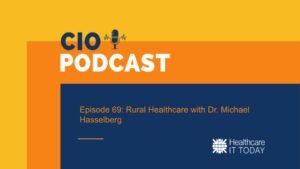The following is a guest article by Dan Parsons, Co-Founder and CPO at Thoughtful
Revenue leakage poses a significant challenge to healthcare providers, and the traditional methods used to mitigate these losses are becoming increasingly difficult to scale.
Healthcare providers need an adaptable and scalable solution to address these issues permanently. RCM automation, powered by artificial intelligence, can achieve this – saving considerable time and adding millions of dollars to the bottom line. Additionally, automation simplifies adaptation to the evolving payer landscape for healthcare providers.
Andreessen Horowitz predicts that at least half of the $4.3 trillion American healthcare industry will be AI-driven within the next few decades. Despite earning $2.6 trillion in revenue, healthcare companies only make a profit of 6.5%. By implementing efficient automation and AI-powered solutions, these companies could substantially increase their profits and overall value. If they improve efficiency by 15% with AI, their collective operating profit could rise by $314 billion, and their total enterprise value could increase by $5.6 trillion.
Here are three ways automation can mitigate revenue leakage and improve your margins.
Claims Processing
Healthcare providers generate approximately 90% of their revenue from insurance companies. To receive this revenue, they must submit claims to the insurance companies.
Claims are packages of data points. They identify the patient, specify what services are eligible for reimbursement, detail the patient’s appointment with the healthcare provider, and provide other relevant information required by the insurance company.
Each data package must meet the specific requirements of the insurance provider. Due to the large amount of data in these claims and the need for absolute accuracy, manual input processes often result in errors and subsequent claim denials.
According to ProPublica, government data shows insurers deny 10%-20% of received claims. However, some providers report that 50% of their claims are denied on the first submission. KaufmanHall states that 73% of healthcare organizations report an increased rate of claim denials.
When claims are denied, healthcare providers must invest additional resources to investigate the issue and submit an appeal. This process is both time-consuming and costly.
Automation can help mitigate this issue by generating and auditing all claims to ensure completeness. For instance, if a claim lacks a necessary attachment or if a CPT code is incorrect, the automation can find and attach the missing item or ensure appropriate modifiers are applied to the CPT code.
Payment Posting
Many patients are covered by major insurers like Blue Cross Blue Shield. If your organization handles around 100,000 claims per week, it’s likely that 1,500 to 2,000 of those are submitted to BCBS each week.
When you receive a data file detailing payments from BCBS or any other large insurer, it’s your responsibility to determine what the payment covers. These files can be extensive, making it difficult to understand what was covered, the extent of coverage, and whether there are any discrepancies. If the payment doesn’t cover everything, you’ll need to pursue the difference.
You then have to either collect the difference from the patient or identify what was denied and why. Next, you’ll need to modify and resubmit the claim. As your staff is resolving these issues, new claims are continuously added to your system, making it increasingly difficult to track what has been covered.
Managing this problem is challenging, and human-dependent methods are becoming less viable. This is especially true since 66% of hospitals and health systems report they are running at less than full capacity.
However, computers excel at making sense of data. With automation, you can swiftly and effortlessly interpret vast amounts of unstructured data or data in different formats.
This is particularly important when dealing with hundreds of insurance providers. For instance, one insurance provider might send you an EDI file, while another could send a 22-page PDF. No one wants to read, input, and analyze a 22-page PDF. Automation, however, can use Optical Character Recognition (OCR) to scan data regardless of its format, standardize it, compare it to existing claims, evaluate the CPT codes, and make sense of it all. Moreover, it can accomplish this much faster and at a fraction of the cost compared to current manual processes in healthcare.
Revenue Reporting
The challenge in revenue reporting lies in the absence of a centralized source of truth, with individuals using different systems to perform their tasks. This situation often complicates the process for users.
An automated solution, however, can greatly simplify tasks by self-reporting. This system can provide answers to questions like: What actions were taken? Which data was accessed?
Moreover, the automated system can display this information in an easy-to-understand format, placing it where your team typically conducts data analysis. With the appropriate automation, you can receive custom reports that seamlessly integrate into your existing systems and track all activities across any platform.
This ensures accurate and comprehensive claims, enhancing the likelihood of successful first-time payments. It enables you to swiftly process and comprehend data from insurance companies, expediting resubmissions and payments. Plus, it saves time, cuts operating costs, and prevents revenue loss.
 About Dan Parsons
About Dan Parsons
Dan Parsons, as the Co-Founder and Chief Product Officer at Thoughtful, stands at the forefront of AI innovations in healthcare. His leadership has positioned Thoughtful as a pioneer in healthcare automation, revolutionizing Revenue Cycle Management (RCM) and forging transformative partnerships with leading healthcare organizations. Dan’s key responsibilities at Thoughtful encompass crafting and executing the product and marketing vision while building a world-class go-to-market and platform team. His career has been staked in starting, leading, mentoring, and investing in technology companies such as ORA Interactive, DRYV, and BetterUp, building incredible products to fuel growth and ROI.
Get Fresh Healthcare & IT Stories Delivered Daily
Join thousands of your healthcare & HealthIT peers who subscribe to our daily newsletter.




